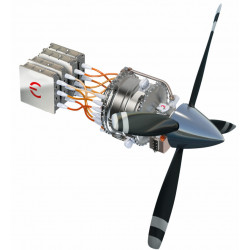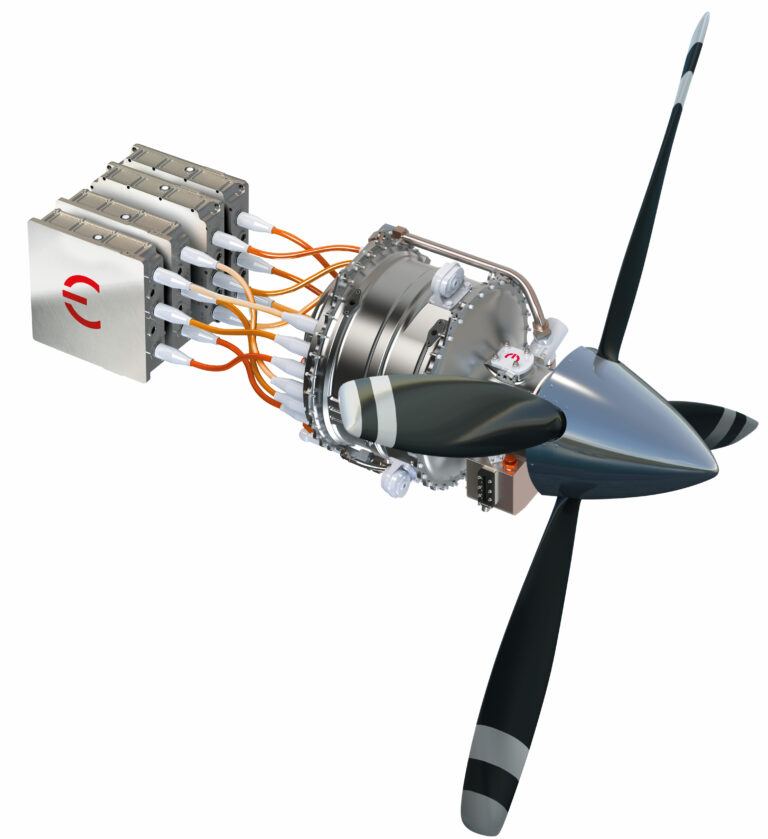Motor drives and power converters for multi-electric aircraft

Motor drives and power converters for multi-electric aircraft
The attitude control of traditional aircraft such as rudders and wings are all accomplished by mechanical devices driven by hydraulic and pneumatic pressure; in addition, the engine steering nozzle and engine reverse thrust control, as well as the door, landing gear, brakes and ground steering control In other places, hydraulic or pneumatic components are also widely used. The weakness of hydraulic and pneumatic devices is their sealing. Since fluid or gas is used to transmit pressure, the transmission efficiency is low, the failure rate is high, and it is not suitable for long-distance transmission. Taking hydraulic pressure as an example, the hydraulic system is more sensitive to changes in oil temperature. The speed of moving parts is not easy to maintain stably; hydraulic systems are bulky and heavy, are highly affected by the environment, and are expensive to maintain. At present, new designs have tended to be partially or fully electrified, using motor drives to replace mechanical hydraulic and pneumatic actuators. This is the concept of multi-electric aircraft.

The motor drive is fully solid-state, with fast response, high reliability, and strong maintainability, which facilitates redundant backup design. The motor drive can also greatly reduce the size and weight of components, which is particularly important for the aircraft itself. In addition, electrification also makes distributed execution control easier to implement.
However, the motors and electronic controls on multi-electric aircraft are generally not allowed to be equipped with liquid cooling, and can only rely on forced air cooling and backboard radiator cooling. Older aircraft can use hydraulic oil circuit systems for part-time cooling, but now they use electric The drive execution component eliminates the hydraulic system. If a liquid cooling system is specially configured to ensure heat dissipation, it will be a retrograde step and a futile effort. Therefore, to realize the electronic control design of multi-electric or all-electric aircraft, the first technical challenge is the high-temperature resistant design of power and drive circuits; high-temperature resistant SOI drive devices and circuits are matched with silicon carbide power modules to solve this problem. Technical difficulties in aviation paved the way.
In addition to motor drives, multi-electric aircraft also put forward new requirements for power electronic converters. The main power supply of multi-electric aircraft uses variable frequency AC power supply or high-voltage DC power supply. The capacity can be as high as tens or even hundreds of KW. The electrical equipment has increased significantly, so various types of power electronic converters are needed for power conversion, including AC /DC, DC/DC, DC/AC, AC/AC and solid state switches, etc. Traditional power electronic devices based on Si can no longer meet the high temperature, high efficiency, high power density and high reliability requirements of multi-electric aircraft. Therefore, intelligent power modules integrating high-temperature resistant SOI and silicon carbide devices have become the first choice for power converters for multi-electric aircraft.
- Electric aircraft
Electric aircraft are aircraft that rely on electric motors to fly. The electricity they use comes from batteries, fuel cells, solar cells, supercapacitors, wireless energy transmission, or other types. In view of the great pressure to reduce the weight of electric aircraft, it is generally not possible to With liquid cooling systems and hydraulic or pneumatic transmission systems that are large in size and weight, they generally only have air cooling conditions. At this time, the thermal management of the motor drive assembly faces great challenges. Here, smart power modules integrating high-temperature resistant SOI and silicon carbide devices have become the only solution.
Similar to electric cars, due to limitations of battery capacity, electric aircraft also have range anxiety. Therefore, they pursue the highest energy efficiency to achieve the greatest cruising range. Therefore, they also tend to shift from bulk silicon IGBT devices to SiC/GaN power devices. Power supply and electronic control system. In this way, not only can higher energy conversion efficiency be obtained, but also higher temperature rise can be tolerated.
Conclusion
High-temperature SOI technology breaks through the temperature dilemma of bulk silicon devices through improvements in device structure; the use of improved metallization systems and high-temperature reinforcement processes greatly improves the high-temperature reliability of devices. As third-generation semiconductor power devices become increasingly mature and popular, their inherent high-temperature performance forms a very ideal match with high-temperature SOI integrated circuits. This opens a new window for aircraft system design engineers and lays the foundation for the comprehensive realization of distributed design and electrification design.

Noteworthy: Cissoid is a leader in high-temperature semiconductors for demanding markets. Cissoid brand product series are sold by agents on the jinftry official website. The price advantage is obvious, the inventory is limited, and orders are accepted at the same time. The order cycle is short. Welcome to negotiate!

